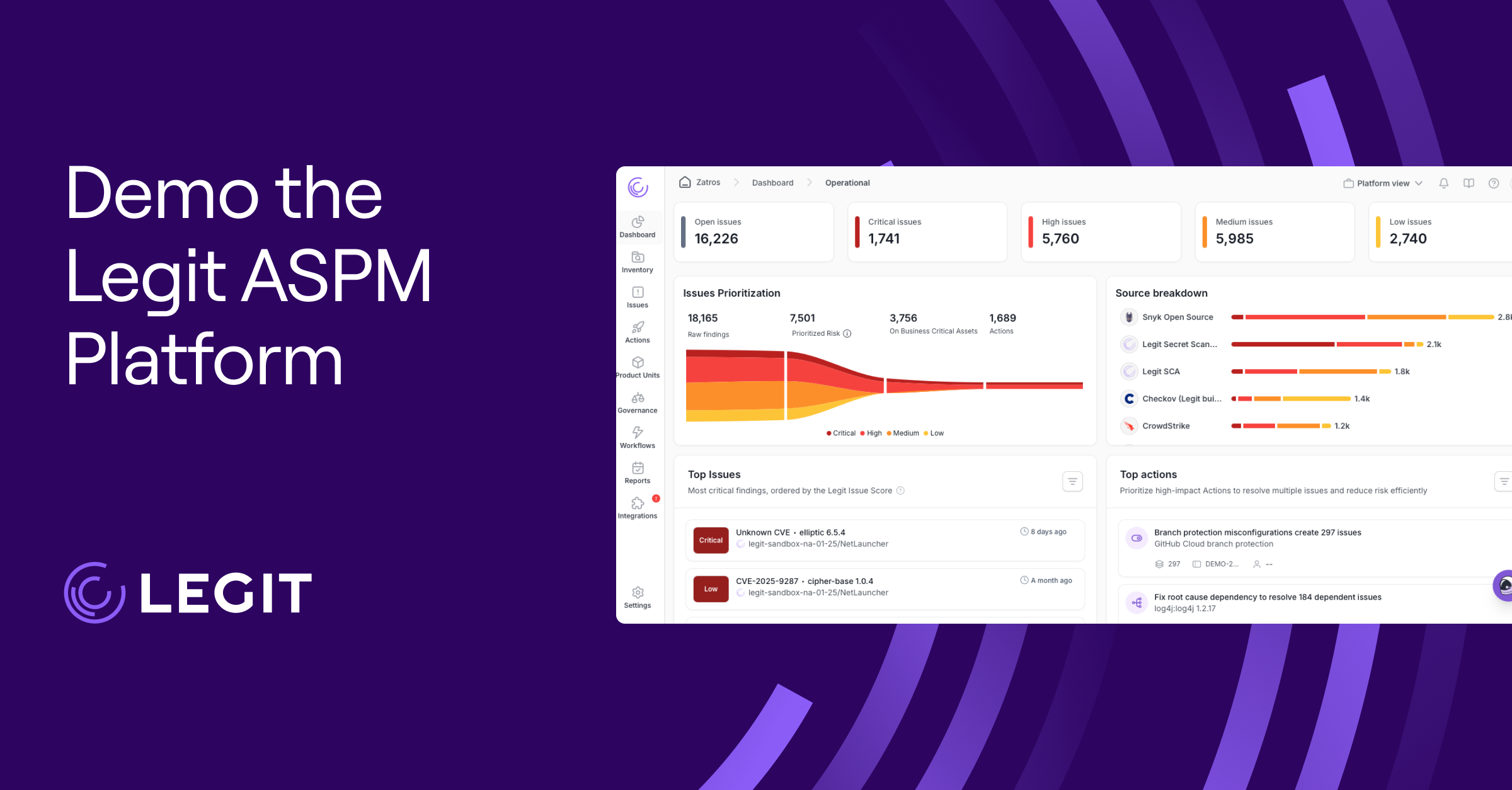Kubernetes, one of the most popular cloud-native container orchestration systems, has seen containers fall prey to several security and compliance issues in the last few years. A 2024 Red Hat study found that security concerns caused 67% of respondents to delay deployment of container-based applications. If similar container problems have also contaminated your development pipeline, you likely had to take mitigating and restorative actions that cost time and money.
While containerization has changed how teams build and deploy cloud-native apps, adopting containers at scale also increases the risks of attack. So, what’s container security, and how can you prevent newer technology from opening new risks in your software?
What Is Container Security?
Containers are tools that pack everything an application needs to run a cloud-native application, such as an operating system and runtime configurations. They are self-contained pieces of code (often for installation), which means containers are portable and efficient.
However, these same features can also increase the risks of malicious dependencies, insecure images, and compromised registries. Once hackers compromise a container, they can infect the entire deployment pipeline through escalating privileges and other malicious practices.
Security in containers protects their images, orchestration systems, and underlying infrastructures against attacks. Security measures often focus on identifying and securing technologies and technical controls. However, it’s important to recognize that the people and processes also play a vital role in preventing vulnerabilities across the software development lifecycle (SDLC).
Comprehensive measures for container security often include implementing secrets scanning, authentication and access controls, and vulnerability management.
Why Is Container Security Important?
Containers have plenty of benefits for the DevOps teams that use them, but their risks can’t be ignored. Failing to implement proper safeguards can open the door for serious security breaches. For example, it only takes one insecure image in a container to expose sensitive data and disrupt daily operations. So, teams must maintain a strong security posture with a proactive approach and regular scans.
Here are a few major benefits of container security:
- Reduced exposure to threats and attacks that target containerized workloads and apps
- Improved compliance with industry standards through continuous audit and monitoring practices
- Better visibility into DevOps workflows
- Reinforcing infrastructure used to identify and resolve potential threats
- Stronger trust with stakeholders by preventing security breaches and securing sensitive data
Common Container Security Challenges
Despite its many benefits, containerization introduces new vulnerabilities that security teams need to stay aware of. Containers generally include a multi-layered infrastructure, and each layer has unique vulnerabilities. Knowing the most common security challenges gives DevSecOps teams an excellent starting point for building container cybersecurity solutions.
Here are the most common container security challenges:
- Lack of expertise: Because containers are relatively new additions to the software development landscape, few people have expertise in building secure containers. Learning on the go creates a “building the ship while sailing” scenario: It’s harder to identify what is and isn’t good practice, and attackers who are familiar with containers are more likely to find a leak before security teams do.
- Expanded attack surface: Each container or Kubernetes cluster increases the number of moving parts in a system. Aside from adding complexity, having multiple containers spreads the attack surface and provides hackers more opportunities to find and exploit vulnerabilities. Proactive patching and monitoring are crucial.
- Privilege escalation: Coding flaws and improper configuration are two vulnerabilities that could lead to privilege escalation. But improper privilege escalation can spread zero-day threats and malware at record speed, so security teams should prioritize AI code security and enforce the principle of least privilege (PoLP).
- Image supply chain risk: Public registries often host insecure images that can open new vulnerabilities in your system, so security teams should avoid unverified and outdated images. The United States National Institute of Standards and Technology also recommends cryptographic verification of system images, container images, and other critical elements.
Container Security Tools and Solutions
People and processes play a critical role in container security, but manual effort alone leaves systems vulnerable to attacks. Companies can use automated and AI-powered tools, such as Legit Security’s AI-native ASPM, to identify, respond to, and mitigate vulnerabilities. Some of the most recommended security solutions include:
- Image and vulnerability scanning: Detect malicious or outdated packages before deployment.
- Secrets management: Prevent unauthorized access to sensitive data, confidential libraries, and credentials.
- Automated checks: Find open-source dependencies and misconfigurations before they make it to the production environment.
- Runtime protection: Identify abnormal behaviors and potential exploit attempts.
- Policy enforcement: Standardize security checks across infrastructure and cloud-native environments and implement the use of immutable tags.
- AI discovery and AI code security: Ensure proper visibility and protection throughout the SDLC.
Leading container platforms like Kubernetes and Docker offer built-in security features that cover these solutions. However, security teams should also identify and fill potential gaps where other types of vulnerabilities might compound once they’re in the container.
Best Practices for Container Security
Tools are an excellent starting point for DevSecOps teams when securing containers. However, just like you can’t rely solely on manual effort, using tools without following container security best practices may still leave your software at risk.
Here are a few best practices for container security frameworks you can adopt in your development environment.
Anticipate and Fix Vulnerabilities
Attackers are always scanning for vulnerabilities in container environments, so your team should do the same. Regularly run vulnerability scanning on base images and dependencies to detect flaws early. Teams should patch quickly, remove outdated images, and ensure that new builds comply with security baselines. This proactive approach minimizes threat exposure and strengthens your security posture.
Integrate Container Security Into DevSecOps Workflows
Containers need to be included in the security checks that accompany more traditional workloads. Avoid missing something that could’ve been caught in standard security checks by including and embedding container security in your DevOps workflows so it becomes part of every release cycle. Integrate tools that flag vulnerabilities early, so every serious vulnerability can be fixed long before deployment.
Apply the PoLP
Prevent excess privilege escalation by using the PoLP, which grants only necessary privileges for each service or container to complete specific tasks. This Zero Trust principle reduces the risk of potential security breaches and lowers the chances they’ll spread. Combining this with automated monitoring can help keep infrastructure compliant and secure.
Provide Training to DevSecOps Teams
Security and development teams need to be trained on how to build and maintain secure containers to adequately reinforce each layer in complex container infrastructure. Proper training doesn’t eliminate threats, but planning for system design and internal processes reduces the likelihood of human error contributing to a container breach.
Strengthen Your Container Security With Legit
Legit Security helps organizations secure containerized applications across the SDLC by providing end-to-end visibility and context-aware protection. The platform’s AI-native ASPM continuously detects vulnerabilities within CI/CD pipelines, orchestrators, and cloud-native environments.
Unlike retrofitted AppSec tools, Legit Security’s ASPM was designed to protect modern workflows and remediate vulnerabilities in new app tools like containers. With Legit, teams can unify the most important parts of app security all on one platform. This holistic approach reduces the attack surface to lower the risk of breaches that begin at the code level and helps teams stay on top of true positive flags.
Ready to see how Legit Security can help you secure your container? Request a demo today.
Download our new whitepaper.


